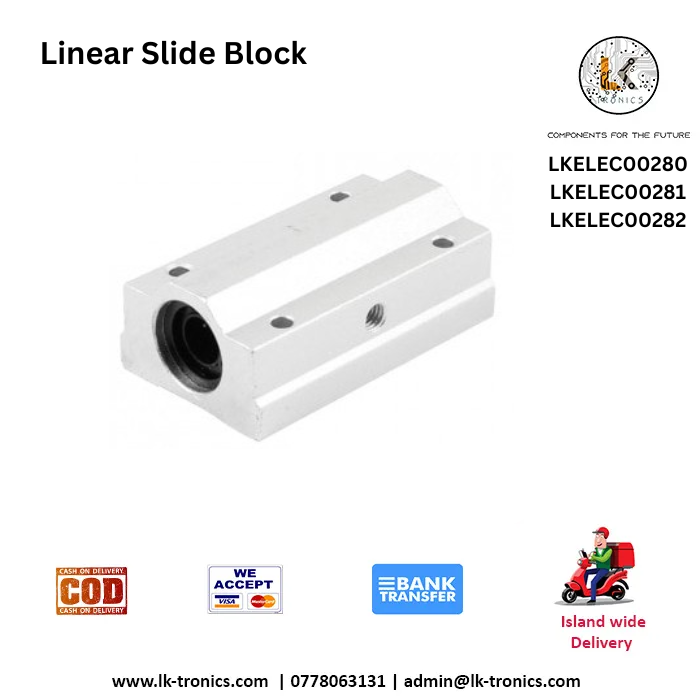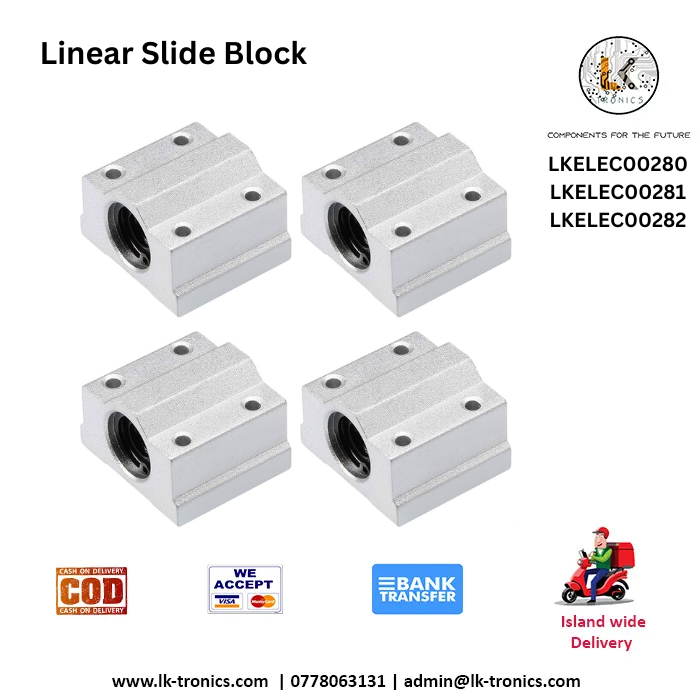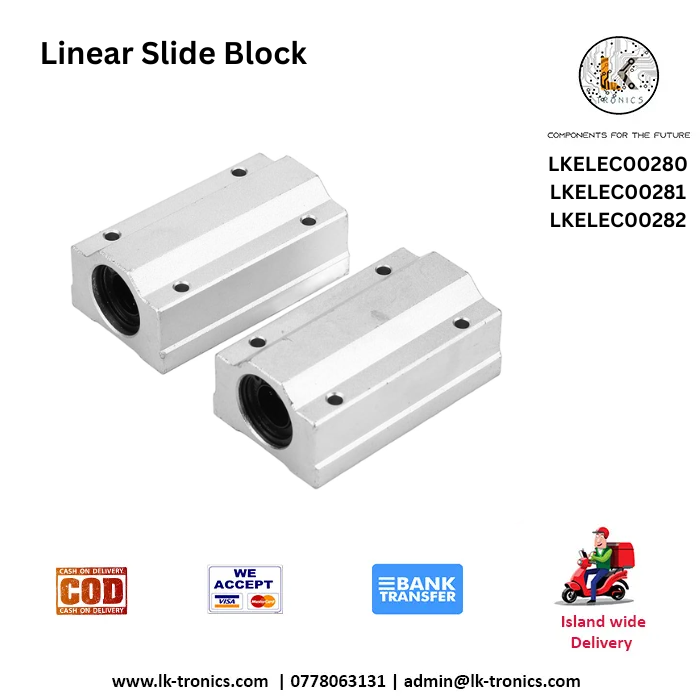Electronics accessories
Linear Slide Block
Availability:
In stock
LKELEC00280 | LKELEC00281 | LKELEC00282
Rs 950.00 – Rs 1,500.00
CompareLinear Slide Block
Specifications
1. Material
- Block Body: Often made from high-strength materials like hardened steel, stainless steel, or aluminum alloy.
- Balls: Usually made from bearing steel or ceramic to reduce friction and wear.
- Lubrication: Blocks may include lubrication channels or be pre-lubricated.
2. Load Capacity
- Dynamic load capacity varies depending on size; it can range from 10 kN to 50 kN for medium-duty applications.
- Static Load Capacity: Typically higher than dynamic, ranging from 20 kN to 70 kN depending on the type and size.
3. Accuracy Classes
- Standard Class (C): For general applications.
- High Class (H): Higher precision for demanding applications.
- Precision Class (P): Extremely tight tolerances for high-precision tasks.
4. Dimensions
- Height: Generally ranges from 20mm to 70mm depending on the series.
- Length: Length varies with the load rating, typically between 40mm to 200mm.
- Width: Between 20mm to 100mm, depending on the size and model.
5. Mounting Holes
- Typically threaded for easy installation.
- Hole Diameter: Common sizes are M3, M5, M6, or M8, depending on block size.
- Hole Spacing: Varies but generally spaced 20mm to 50mm apart.
6. Preload
- Options for no preload, light preload, or heavy preload depending on the application. Preloading helps in reducing clearance and increasing rigidity.
7. Lubrication Options
- Sealed or non-sealed options are available.
- Some blocks come with integrated lubrication systems.
8. Operating Temperature Range
- Typically operates between -10°C to 80°C but can be extended with specialized materials.
9. Linear Rail Compatibility
- Compatible with various types of rails (e.g., Hardened Rails, Precision Ground Rails), commonly square or round rails.
10. Applications
- Used in CNC machines, 3D printers, robotic systems, factory automation, and linear actuators.
| Size | SC8LUU, SC10LUU, SC12LUU |
|---|
Based on 0 reviews
Be the first to review “Linear Slide Block”
You must be logged in to post a review.












There are no reviews yet.